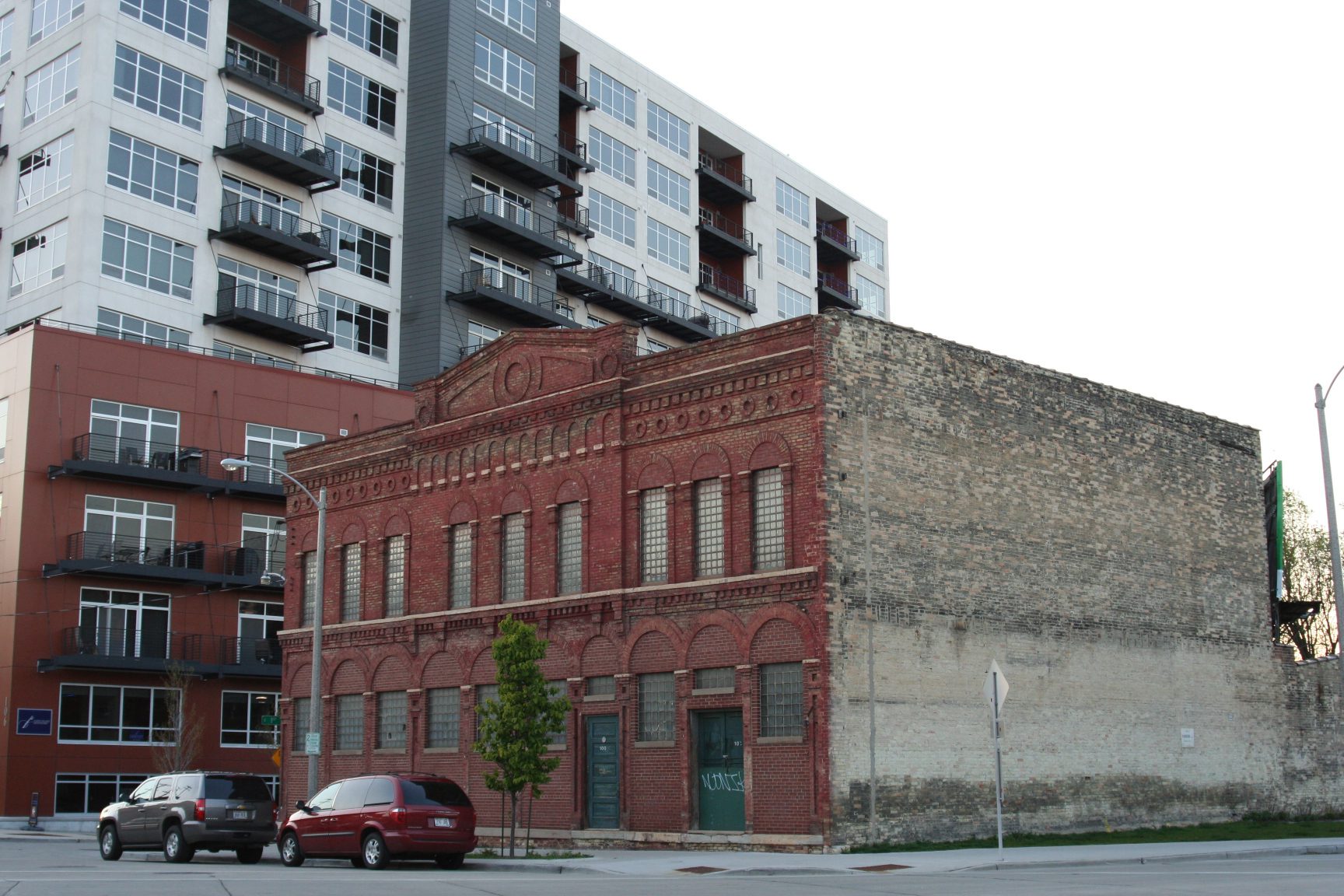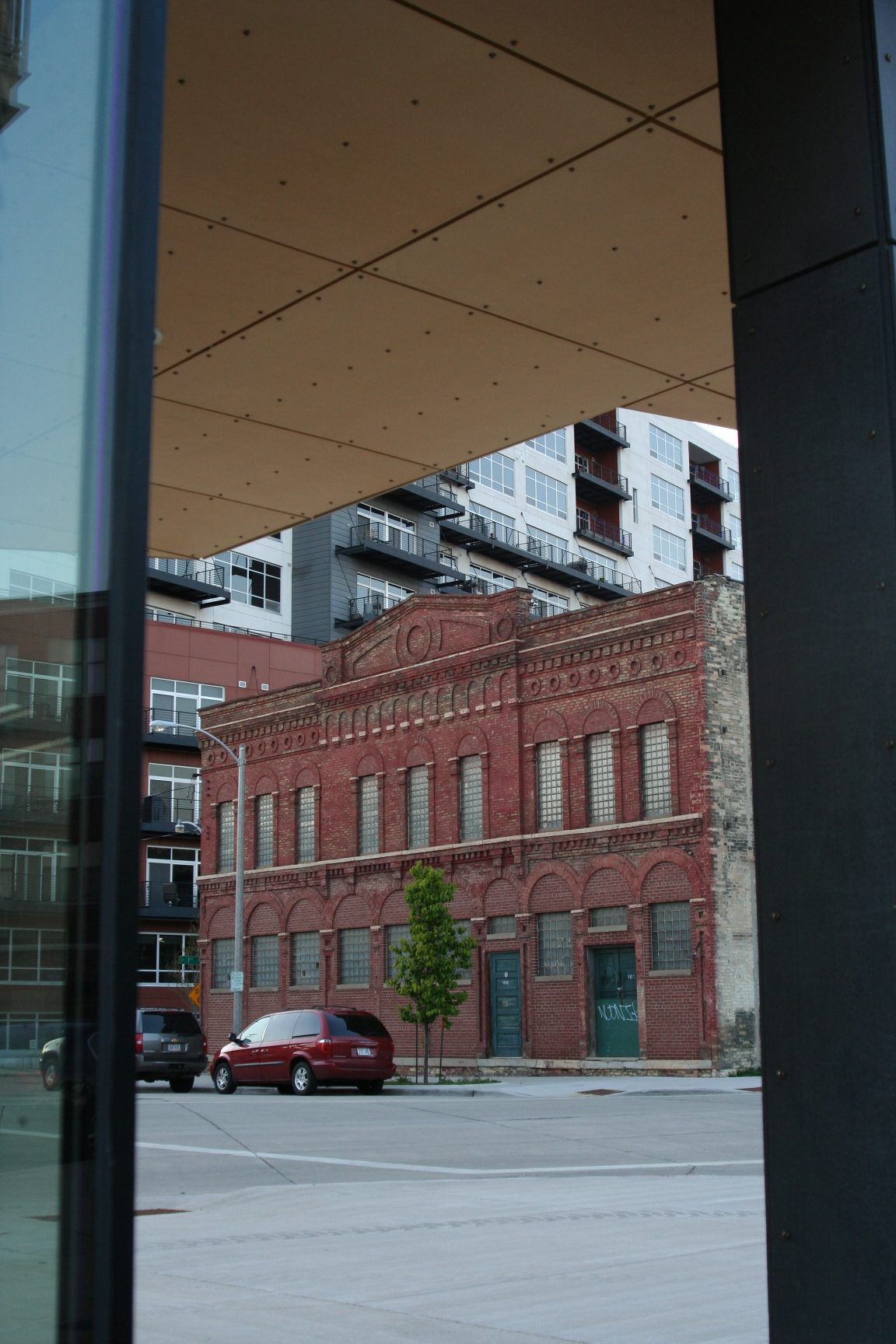Standing at the northern gateway of Milwaukee’s Fifth Ward and the confluence of the Menomonee and Milwaukee Rivers is a highly-visible, vacant brick structure with all the signs of promise.
The Burnham Building, with its solid construction, unprecedented views, nearby high-density residential developments, and proximity to a newly reconfigured park has captured the hearts of many. A recent rumor of its possible renovation caught my attention and I headed to the site a few days later, captured the enclosed photos, and reflected on how much has visibly changed in the neighborhood over the past five years.
In 2004, the Burnham Building almost met its end when a condominium proposal threatened the building’s existence. Cited that its “historic value may have been diminished because it has been altered several times,” the building has endured, sharing its ornately-arcaded Italianate façade with passers-by for another eight years. While new construction on the site certainly could have created an exciting prospect, Milwaukee would have permanently lost a great opportunity to sustainably rehabilitate an incredibly unique building due to eagerness in the condo market. With a total square footage of 11,328 and $410,500 assessed value, the Burnham Building has tested the patience of some who would like to see the site developed in both a manner and a size similar to that of the new construction surrounding it.
On the return home from the photo shoot, I pondered why buildings like the Burnham Building challenge the patience of city dwellers who like to see progress. The American cities which host an abundance of underutilized buildings like these tend to be the places where I see the most potential: communities with the basic infrastructure already in place to support new economic opportunity. All we have to do is patiently apply our reconstructive talents to transform vacant buildings into beautiful assets.
Promoting gradual processes in the building industry can be likened to applying the principles of the Slow Food Movement to construction and development. Reviewing the Slow Food Movement history highlights some appealing parallels to how we could approach development in a similar fashion: “Slow Food was created in response to the increasing industrialization of food and standardizing of taste. Carlo [Petrini] recognized that with the rise of fast food, thousands of food varieties and food traditions were disappearing, and that people were losing the connection between the plate and the planet. To counter the fast food trend, Slow Food aimed to demonstrate alternatives to industrial food and farming, to raise awareness of how our food impacts the environment, and to support the workers who produce our food.” In the way that Slow Food seeks to elevate individuality in the dining experience, a Slow Building Movement could celebrate the quality generated from rehabilitating vernacular architecture.
This correlation made me wonder: why is it that we do not yet have a Slow Building Movement in the United States to emphasize standards in reimagining our existing buildings?
Conducting a bit of research on this thought led me to Jerry Yudelson. His 2008 book, Green Building Revolution, actually referenced the Slow Food Movement and proposed a definition for the phrase “slow building revolution” as it relates to environmental sustainability: “…The “slow building” movement focuses on creating designs that are appropriate for a given bioregion, taking into account climate, natural resources, local economies, indigenous building styles, and cultural values. It is opposed to the widespread “internationalization” of buildings ,which makes it impossible to tell what climate or country a building represents because most office buildings tend to look (and function) alike, anywhere in the world. The slow building revolution looks to slow down the design process in favor of a sustainable design approach that takes more into account than just design program objectives, budget, and schedule.” (P172-173. Yudelson offers similar commentary in a 2007 post that can be viewed at iGreenBuild.com.)
Yudelson’s focus on the green building industry led him to propose a Slow Building Revolution that is primarily tied to environmental health, but he also highlights some important notions about making gradual decisions that pay tribute to local values in design. These carefully-managed decisions require both information and time. With this in mind, I would propose that a Slow Building Movement incorporate a few other key principles: 1) advocating for a strong tie between the end product – the renovation of a building – and precedent, and 2) making sound choices with existing buildings so that we create thoughtful, profitable, lasting high-quality structures in which to live and work. After all, is that not a shared goal across all industries?

Photos by Stephanie Allewalt.






Comments